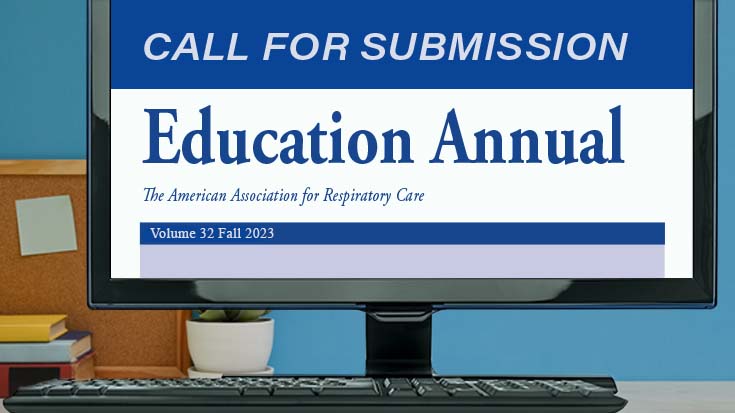
Since its inception in 1947, the AARC has worked closely with physician champions to further the respiratory care profession. Early in AARC’s history, the Association established a formal Board of Medical Advisors (BOMA) to ensure RTs would have a direct line to those physicians whenever the need arose.
BOMA has been there for the Association through everything from developing formal educational programs for RTs to enacting licensure in states across the nation.
How is this group of 16 physicians, most of whom represent major physician organizations such as the American Thoracic Society and American Academy of Pediatrics, helping the AARC move the profession forward today? We talked to several members to find out.
Growing the profession
BOMA Chair Loreta Grecu, MD, an associate professor of anesthesiology at Duke University in Durham, NC, and an American Society of Anesthesiologists representative on BOMA, believes the top job of BOMA in 2023 is ensuring the future viability of the profession.
“This year, 2023, the most important issue is growing the profession and maintaining the number of RTs throughout the country,” she said. “Simply put, we would not be able to care for the patients without RTs.”
She says the pandemic made that abundantly clear.
“We cannot thank them enough for their dedication and effort,” she said. “However, we should acknowledge the assumed risks to their well-being as well as the impact of such responsibilities on their families and friends.”
Dr. Grecu says the level of burnout experienced by RTs has yet to be well-addressed. One result has been a migration of therapists away from the profession and less interest in those outside the profession in becoming an RT.
“Legislative and national initiatives are needed to improve the current situation,” she said. “We can and should help here since it is obvious we all need each other.”
Respiratory Care Collaborative at CHEST getting back on track
BOMA has been working to ensure physicians are more available to assist RTs in these efforts by supporting the renewal of the Respiratory Care Collaborative at the American College of Chest Physicians (CHEST) annual meeting.* The collaborative, which includes the AARC, NBRC, CoARC, CHEST, American Thoracic Society, Society for Critical Care Medicine, and American Academy of Sleep Medicine, has not met for the past three years, and at the BOMA meeting in November, the group called for its reinstitution this year at CHEST.
Russ Acevedo, MD, FAARC, FCCP, FCCM, an intensivist at Crouse Hospital and clinical professor of medicine at Upstate Medical University, both in Syracuse, NY, represents CHEST on BOMA. He believes this meeting is essential because it allows physicians to understand every aspect of the respiratory care profession, from clinical practice to credentialing, to the accreditation of school programs.
“In order to advance respiratory therapy as a profession, there needs to be strong support and direction from the physicians,” he said. “For example, for the Advanced Practice Respiratory Therapist to be successful, physicians need to help define the education, skill sets, and competencies, and outline how to maximize the practice of the respiratory therapists in various care settings.”
Strengthening relationships with medical directors
William C. Yarbrough, MD, a pulmonologist with the Veterans Affairs North Texas Health Care System in Dallas, TX, who represents the Veterans Administration on BOMA, agrees one of the top goals for BOMA is to assist the profession in the development of advanced practice positions that allow therapists to act as physician extenders.
“BOMA advocates attainment of advanced certifications and functional statements, allowing practice at the top of these positions,” he said.
Past Chair David Bowton, MD, FCCP, FCCM, a Professor Emeritus at Wake Forest University School of Medicine in Winston-Salem, NC, who also represents CHEST on BOMA, says efforts to restitute the collaborative at the CHEST meeting will help, and he believes the CHEST meeting can be used to strengthen ties with medical directors as well.
“We are also exploring how BOMA members could enhance the relationship of the AARC with medical directors of respiratory care by coordinating sessions at the AARC booth at the CHEST annual meeting directed at helping medical directors define their roles and duties,” he said.
Part of the effort will be encouraging medical directors to interact better with the C-suite in their organizations regarding RTs.
It’s all part of a singular mission on the part of BOMA to elevate the profession.
Said Dr. Grecu, “The upcoming conference will be the perfect place to initiate a more in-depth conversation and start asking hard questions, and that will hopefully lead to better ways to answer them as well.”
Complete dedication
Matthew Sharpe, MD, an associate professor of medicine at the University of Kansas Medical Center in Kansas City, KS, and an American Thoracic Society representative on BOMA, is a relatively new member of the group who has been impressed by the dedication BOMA members show to the respiratory care profession.
“What I have seen in my short time as a representative is a complete dedication from my BOMA colleagues to the respiratory care profession,” he said. “There is support at the educational, professional, and political levels. Each of the initiatives that BOMA supports are for the betterment of the respiratory care profession and, ultimately, patient care.”
Email newsroom@aarc.org with questions or comments, we’d love to hear from you.
















